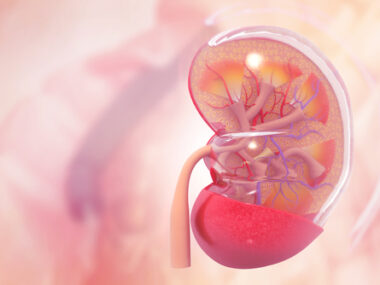Plant-based raw food diet eases symptoms of SLE, Sjögren’s: Report
More research needed into diet's role in autoimmune disease
Written by |

Three women with the autoimmune conditions systemic lupus erythematosus (SLE) and Sjögren’s syndrome saw their symptoms ease after starting a diet rich in plant-based raw foods, according to a recent case series report.
The diet included mainly leafy greens, cruciferous vegetables, flax or chia seeds as a source of omega-3 polyunsaturated fatty acids, and water.
“The dramatic improvements in symptoms and quality of life reported by the three patients in this case series demonstrates what I see every day in my practice, that autoimmune diseases can quickly improve with optimal nutrition,” Brooke Goldner, MD, of of the study’s authors, said in a press release.
The case series report, “Case series: raw, whole, plant-based nutrition protocol rapidly reverses symptoms in three women with systemic lupus erythematosus and Sjögren’s syndrome,” was published in Frontiers in Nutrition.
SLE is the most common type of lupus, which features an abnormal immune system response directed against healthy tissues. It can affect any part of the body, resulting in a wide range of symptoms, including fatigue, joint pain, skin issues, and hair loss.
A growing body of evidence has shown that adhering to plant-based diets might protect against autoimmune diseases and ease symptoms associated with autoimmunity. However, “clinical attention and research has been lacking on its effectiveness at treating and managing autoimmune diseases,” Goldner said.
Here, researchers detailed the cases of three women with both SLE and Sjögren’s syndrome who adopted a diet rich in plant-based raw foods to ease symptoms of autoimmunity. Sjögren’s is an autoimmune disorder marked by damage to moisture-producing glands, causing dryness in the eyes and mouth. It’s estimated to affect about 6 to 19% of SLE patients.
Changes to diet resolve autoimmune symptoms
The women adopted a plant-based nutrition protocol that eliminated all processed foods, called the Rapid Recovery Protocol (RRP), that was developed by Goldner. It focuses mainly on consuming raw foods, particularly leafy greens and cruciferous vegetables like kale, cabbage, and Brussels sprouts, omega-3 polyunsaturated fatty acids (ground flax or chia seeds), and water.
Fruit intake shouldn’t exceed 25% of the total food intake and vitamin B12 and vitamin D supplementation were recommended. Following symptom remission, patients were allowed to shift to a maintenance diet that incorporated some cooked whole plant foods, as well as more fruits, nuts, and seeds. After six months, processed vegan foods, foods with sugar or oil, and alcohol were allowed once or twice a week.
All the women reported that almost all their symptoms resolved after four weeks of making the dietary changes. They’ve since remained free of symptoms, with two reporting no symptoms for more than six years without the recent use of medications.
Goldner, a lupus patient, has also been free from joint pain and inflammation, sunlight sensitivity, and kidney dysfunction for more than 18 years, which she attributes to the protocol.
One woman, 40, was diagnosed with lupus and Sjögren’s when she was pregnant in 2013. She had fatigue, extreme sensitivity to sunlight, debilitating leg pain, and dryness in the skin, eyes, and mouth. Most of her symptoms resolved within four weeks of starting the diet and her skin issues resolved after three months, she said.
“The most exciting thing for me was when I realized being in direct sunlight didn’t hurt my skin,” she said. “I’ll never forget the feeling of going to the beach [two] months after giving birth and enjoying the feeling of the warmth of the sun on my face and body. Prior to that, being in direct sunlight would physically hurt my skin. Now I can enjoy it! I remember realizing the possibilities were endless with what I could do for myself and what I could do with and for my family now that I was healthy.”
Another patient, a 54-year-old woman, had sunlight sensitivity, a butterfly skin rash on her cheeks and nose, an itchy scalp, fatigue, and dry mouth and eyes. She also had brain fog, the feeling of being mentally drained and unable to concentrate, and was frequently hospitalized due to inflammation of the pleura, the tissue that separates the lungs from the chest wall.
After adhering to the diet protocol, most of her symptoms resolved within 14 days. Inflammation and dryness in her eyes eased over several months.
“I can walk everywhere. I can play with my kids. I can remember things and I don’t have to write everything down. I can type, I can text, and I don’t take any painkillers anymore,” she said.
The third woman was a 45-year-old mother of four, who had flu-like symptoms, migraines, debilitating fatigue, nerve pain, eye pain, dry mouth, and skin sensitivity to sunlight. Many of her symptoms went away within weeks after starting the diet.
“I was able to stay up late,” she said. “I wasn’t tired anymore. My skin and joint pain vanished. I didn’t feel nauseous anymore.”
Goldner said she hopes the cases help make “patients and clinicians aware of food as medicine as a treatment option for systemic lupus erythematosus and Sjögren’s syndrome.” She said the cases show more research is needed into changing diet for treating autoimmune diseases.






